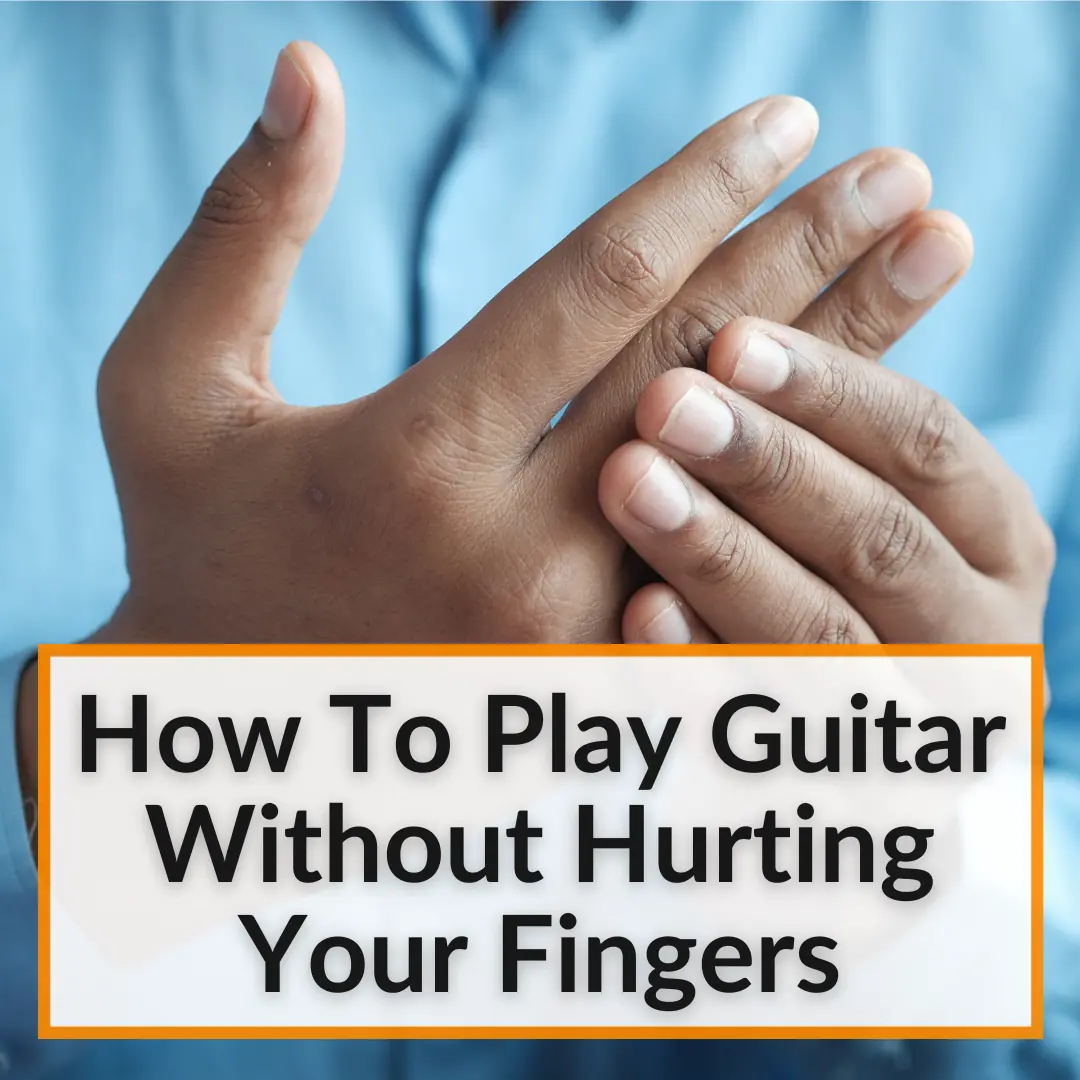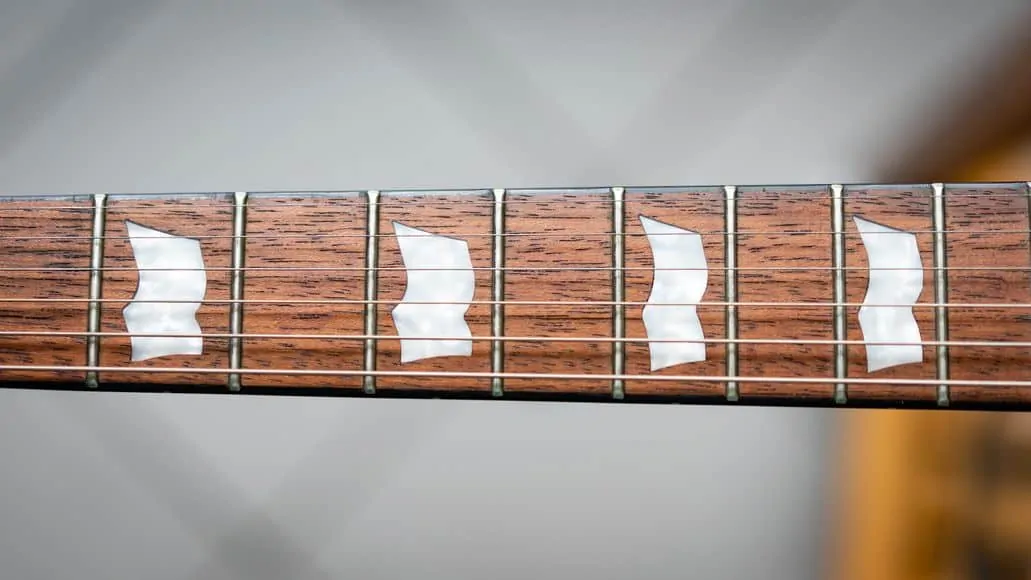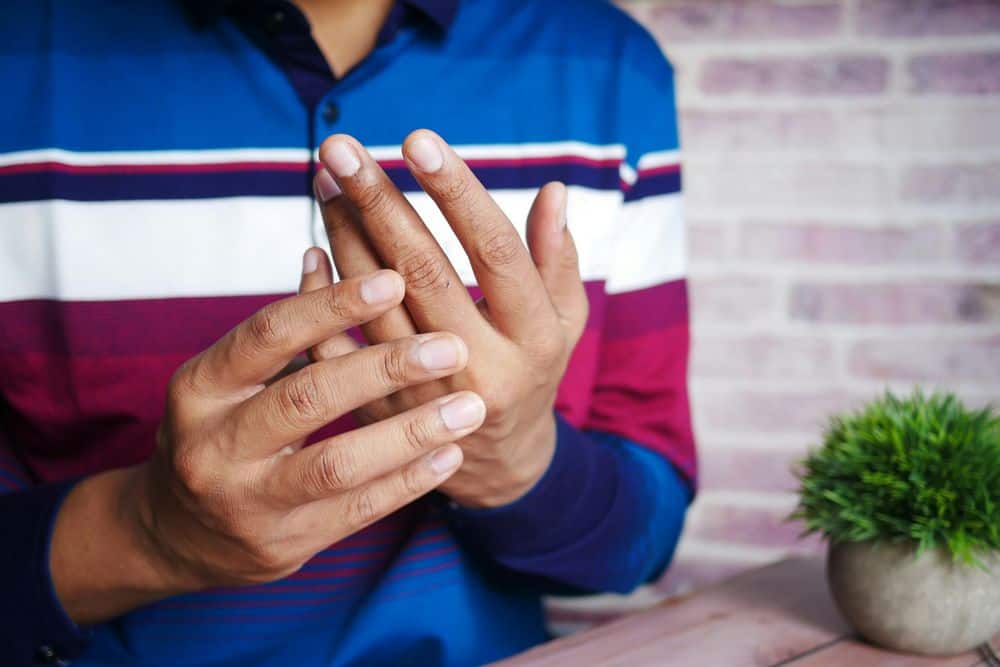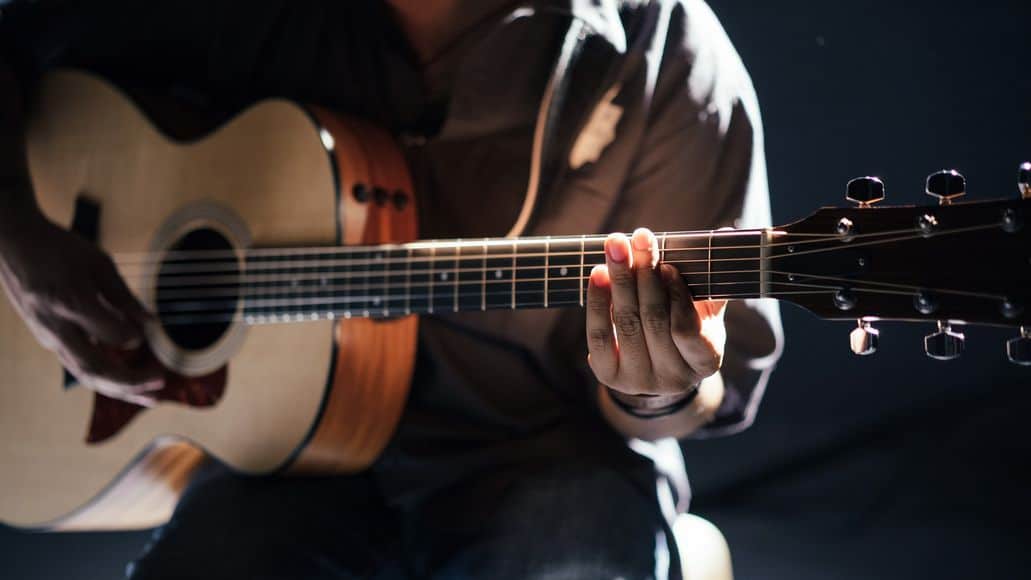 We all go through it.
We all go through it.
Every single person who has learned to play the guitar suffered from hurt fingers.
Your fingertips hurt from pressing down the strings.
And your fingers and wrist hurt from being bent into strange shapes and using previously underused muscles.
The good news is: there are tools that can help.
The bad news: you’re better off without them,.
But you can take steps to minimize the pain. Keep reading to learn how to do that, along with a rundown of some of the available tools and whey they are not usually the best idea.
Table of Contents
How To Play Guitar Without Hurting Your Fingers
There’s no way to completely avoid pain when learning to play guitar. Although there are tools that allow you to perform without dealing with these issues, they’ll hinder your progress, sometimes even severely.
The best way to go about it is to mitigate the problem by practicing in moderation until you build calluses. Let’s look at some different option, but first, I have some hard truths for you.
What You Need To Know First
The guitar is a very specific instrument. Apart from being incredibly attractive to new music enthusiasts, it’s also infamous for causing some pain to absolute beginners. You’ll hear many stories of new players struggling with pain in their fingertips or their hands.
These pains, which are all about the fretting hand, is something all experienced guitar players have dealt with before reaching their current skill level. There is no best method for learning to play the guitar that allows you to avoid these pains. It just isn’t possible.
This, however, shouldn’t ever discourage you from continuing to play. In fact, it’s more of an encouragement: knowing that if you’re struggling, you’re actually on the right path.
That said, there are things you can do to minimize the pain. We’ll cover some of the methods and tools that you can use next.
That said, the tools that I will mention are not the best way to go about it, if you want to become a good guitar player. But they can help you understand the instrument in combination with regular exercise.
Using Tools To Protect Your Fingers
One of the popular tools out there is the so-called Chord Buddy. Essentially, it’s a contraption that you place at the nut and the lowest frets that allows you to press down on the strings using buttons and a very clever mechanism.
You have four buttons, each one pressing down on frets that create specific open chords. Although fun and engaging, this is not the best option for learning the instrument in the long run.
However, it is a nice idea for the youngest music enthusiasts who want to get into guitar.
There are also specialized fingertip protector covers. The same rule applies here, though these are better. While they are far from perfect, at least they allow you to freely use your actual fingers and thus understand the fretboard.
But covers aren’t all that practical (and may not even be comfortable). You really need to have direct contact with your instrument. That’s the only way actually to learn it. Using covers for a while may not be the worst idea, but make sure not to get too used to them.
I’ll also mention practice guitar necks, sometimes referred to as “pocket guitar necks” or “pocket chord practice tools.” They’re essentially a recreation of a guitar neck’s lowest frets.
You can use these to practice chord and scale fingerings, as well as playing melodies, riffs, or anything else. They may have less tension in some cases, and they’re probably the best tools of the ones listed here. They’re actually useful and productive.
Some would also suggest playing nylon-string guitars. This could also be a simpler way to go about things as a beginner, since these strings are thicker and softer, making the impact on your fingertips much milder. However, the downside here is that you’ll need to purchase another guitar specifically for this purpose.
The Hard Truth: You Need To Build Calluses And Train Your Fretting Hand
To put it simply, you just have to build calluses on the tips of your fretting hand fingers. And you’ll also have to gain strength and stamina in your fretting hand. This is something that all guitar players go through in their beginning phases, be it for longer or shorter periods.
For better or for worse, there’s no going past that in any way. Maybe you can try covers for a while. But in order to play the instrument and get good at it, you’ll have to drop them sooner or later. And our stance is that you should do it sooner rather than later.
How To Mitigate The Pain
Although forming calluses and getting proper fretting hand stamina is always painful, you can find ways to have some control over these issues. Again, you can’t fully avoid this if you want to be a good guitar player, but there are ways to mitigate the pain.
The simplest approach is just to restructure your practice routine. Just like with any skill, consistency, and patience are key. So, instead of practicing for hours at a time, you can cut it up into shorter and more effective practice sessions.
Let’s put it like this — you’ll sit and practice for about an hour for a few days. After that, your fingertips and the entire fretting hand could be so sore that you’ll stop playing for at least a few days.
Instead, you could go with consistent 20-minute sessions every day or even every other day. Don’t worry — you’ll have time to get to those long practice and jam sessions once your hands get used to things. Just don’t overwork yourself at the earliest beginner stages.
But this still feels like it’s not enough, right? Well, if you think that you need to supplement the wasted time, you can always find alternative methods.
For instance, you could try to remember all the fingering patterns and play the stuff in your head. Yeah, it may sound weird, but playing in your head, so to speak, can be a useful method as well.
Even about 15 minutes every day can make a world of difference if you’re doing it consistently. Start with basic guitar finger exercises. As time goes by, you’ll slowly build more stamina with minimal pain, and you’ll start getting calluses on your fingertips.
Once you feel more comfortable, try increasing the time of each individual practice session. It could take a few weeks to a few months to get there with this approach. You could try and add a few more minutes every week.
But, again, don’t go overboard. There’ll be time for serious practice sessions a little down the road. For now, it’s all about baby steps.
How To Not Hurt Fingers When Playing Guitar: Final Thoughts
While it’s impossible to completely avoid the discomfort that comes with learning to play the guitar, there are strategies to mitigate the pain while you build the necessary strength and calluses in your fretting hand.
Using tools like fingertip protectors or practice guitar necks may offer temporary relief, but ultimately, the most effective approach is to gradually build calluses and strength through consistent, moderate practice sessions.
By restructuring your practice routine and gradually increasing playing time, you can minimize discomfort while allowing your hands to adapt and develop the necessary stamina.
While the process of learning the guitar may be challenging, the rewards of becoming a proficient guitarist make the initial discomfort worthwhile. Remember, patience and persistence are key, as you embark on this rewarding musical journey.




Leave a Reply